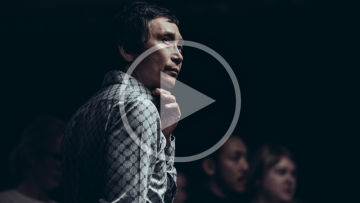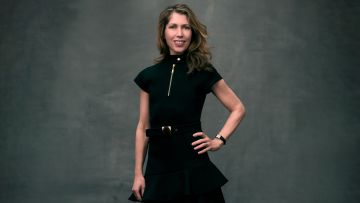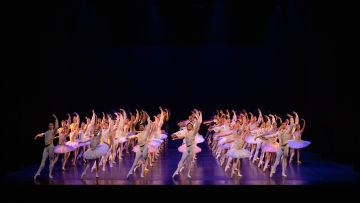Fairytale Life
They are the stories that have fascinated people for millennia; tales of faraway kingdoms and mysterious woodlands, a world where the animals speak and evil temptresses place spells on innocent youth.

Read aloud in dimly lit rooms as children dreamed away the night, the tales of fairy godmothers, distressed damsels and cursed swans lend more to the imagination than pure fantasy.
For QB Senior Soloist Mia Heathcote, between “Once upon a time” and “happily ever after” is an underlying message that love is a powerful force that can conquer evil. Since joining the Queensland Ballet Company in 2014, Mia has had her fair share of performing some of the most romantic and tragic ballets: from the role of Juliet in Sir Kenneth MacMillan’s Romeo and Juliet, young Clara in Ben Stevenson’s The Nutcracker, and the Corps de Ballet in Greg Horsman’s The Sleeping Beauty.
“The Sleeping Beauty is innately a story of love. Through the contrasting characters and their journeys we witness love conquer evil,” says Mia.
“I think that’s what makes these ballets so emotionally captivating. Through the beauty and charm of the fairytale is a discovery of what it means to be human.”
However, despite stepping into the shoes of these timeless characters, Mia didn’t grow up idolising princesses and dreaming about happily ever after.
“I wasn’t really a fairytale kid,” says Mia.
“But when I was introduced to these stories as ballet, I really saw the human dramatic elements that were woven into the fairytale. I’ve always had an appreciation for stories that display human emotion.
“Even though we don’t always get a happy ending in the real world, when we see it realised in these stories, it gives people a glimmer of hope that things can be good in the end.”
In the late 19th century, French choreographer Marius Petipa transformed these iconic tales from the written and oral word into evening-length ballets. It was the beginning of a symbiotic relationship between ballet and the otherworldly.
The pointe shoe lent itself to the magic, a simple object that transformed ballerinas into ethereal fairies and princesses that floated seamlessly across the stage. Some of today’s most beloved ballets


The dynamic partnership delivered a magnificent ballet that enchanted audiences, telling the story like never before.
“Ballet and fairy tales go hand-in-hand. Both are so ethereal and otherworldly, it’s hard to not escape into a different world when you watch them.”
Mia performed in Queensland Ballet’s production of The Sleeping Beauty in 2015. Choreographed by Greg Horsman, Mia’s role within the Corps de Ballet was physically and technically demanding. With casting unannounced for the 2021 production, the possibility of dancing the lead role Aurora both excites and terrifies Mia.
“The role of Aurora is one of the most challenging roles within the ballet repertoire,” says Mia.
“Everyone I have spoken to has said it is hands-down the most challenging classical role, but also the most rewarding.
“Every sequence has an intention and incredible attention to detail. It pushes you to the limit.”
From Swan Lake to The Sleeping Beauty, fairytale ballets are incredibly popular, with tickets snapped up to see the tales reimagined through movement. Even as the modern world progressed and society’s values and ideals shifted, the story of an evil fairy’s spell endures.
“Audiences can expect a really beautiful narrative of juxtaposing characters. There will be the innocence and the evil, and the magic of ‘happily ever after’,” says Mia.
As for the popularity of fairytale ballets, Mia says it all comes down to familiarity.
“These stories have been around for centuries, they are iconic and historic,” says Mia.
“There is no pressure to read the synopsis before the curtain rises. We can fully immerse ourselves in the production without getting lost.
“I suppose that’s why it’s called a classic.”
- By Ellen Gilroy
The Sleeping Beauty is on 4 -19 June, Lyric Theatre, QPAC



